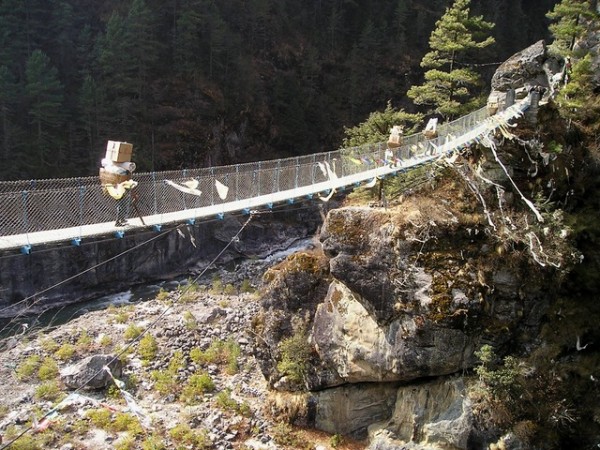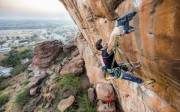Everest Base Camp Trek
Moun Everest, which towers above Khumbu (one of the three sub regions of the main Sherpa settlement of the Himalayas) at over 29,000 feet, is considered as the toughest challenge and adventure on this planet. Everest base camp trek starts from Lukla to the vast glaciers and the sharp ridgelines of the Himalayas in and around the Everest. At the Base Camp, the adventurers encounter the famous Khumbu Icefalls. Scaling the Kala Patar summit at over 18,100 feet would bring one face to face with Everest’s windblown summit, amidst a trail of cloud and snow. The epic journey begins and ends in Kathmandu.

Everest Base Camp Trek Itinerary:
Day 1: The trip takes off in Kathmandu. The local staff who would accompany the tourists would meet here and boarding in Thamel. Day is open for exploring the unique area.
Day 2: Guided tour of the cities of Kathmandu and Patan. Visit to the famous Swayambhunath Temple, Boudhanath and Patan’s magnificent Durbar Square. A brief orientation on the ensuing trip.
Day 3: The journey begins early in the morning. The adventurers reach Lukla (9,200 feet) by air. Lukla is the entry gate to Solu Khumbu. Thereafter, the Everest base camp trek begins with a 4-hour hike down terraced hillsides and along the stone fences to Dudh Koshi River. The team crosses a hanging bridge over the river and reaches Phakding, the first camp of the expedition.
Day 4: Day begins with a cup of hot tea and a hearty breakfast. The Everest base camp trek trail beginning thereafter passes through rolling terrain, rural houses, agricultural fields and pine and cedar forests. Gradually, the team reaches the entrance of Sagarmatha National Park, the snowy peak of Thamserku (21,856 feet). A steep hike that scales 18,000 feet reaches Namche Bazaar village, the largest Sherpa village.
Day 5: Acclimatization day. Also the trekkers decide to trek to far higher altitudes. The high peaks of Kwangde (20,930 feet), Thamserku (21,856 feet), and Kangtega (22,240 feet), Nuptse (25,790 feet), Lhotse (27,940 feet), Ama Dablam (22,943 feet) and even Mount Everest (29,035 feet) are visible during this trek. Overnight at Namche Bazaar.
Day 6: The trekkers leave the standard Base Camp trail for the next few days. The route ascends through rhododendron forest traversing the spectacular southern slope of Khumbila, the sacred mountain of the Sherpas. The team also treks over Moung La pass (12,992′) with the spectacular Thamserku peak looming in the near background. Overnight camp at Phortse.
Day 7: Ascent Pangboche (13,030 feet) in the morning hours. Visit Pangboche Monastery, the oldest monastery in the Everest region, in the afternoon.
Day 8: Challenging climb to Dingboche (14,400 feet). After ascending along Imja Khola river, the trail climbs slowly up to the potato fields of Dingboche village. The afternoon is all for the visitors.
Day 9: Ascending the base of Nangkar Tshang peak and also get a stunning view of Makalu.
Day 10: Starting for Pheriche valley and well above it, the trekkers’ team gets past Northwest side of the valley, passing through alpine scrub and yak pastures, and enjoys panoramic views of Tawoche, Cholotse.
Day 11: Trek about 1,000 feet to reach Gorak Shep, located very close to Kala Patar. Weather permitting, the trekkers would set out for the summit of Kala Patar to enjoy mind-blowing view of Mt. Everest (29,035 feet). It the visibility is bad, the team would instead reach the Everest Base Camp and scale Kala Patar the next morning.
Descent begins through the same route from Day 17 onwards.

